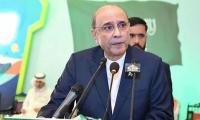What country ranks 134th out of 192 countries in per capita GDP by purchasing power parity? What country is second from the bottom in the WEF’s Global Gender Gap Index? What country is ranked number one in the US Holocaust Memorial Museum for Countries at Risk of Mass Killing? What country is in the top twelve in the world for risk of sovereign default?
Before you guess, here is some more data. Maybe more important.
In the list of countries that are relatively poor, this country has stayed static, in its region and globally – many countries that are as large or larger, as complex, or more complex, as complicated or more complicated, have rocketed past it in terms of GDP per capita. In the list of bottom feeding countries on the Global Gender Gap, this country is a constant, as it is at the top of the list for risk of mass killing. On the list of countries that are constantly flirting with a conversation about default, this country has been the most consistent chart topper, with at least a quarter century of constant chatter about an imminent default.
So conversations about an absence of prosperity, massive gender inequality, insecurity of life and property, and the potential for insolvency are not new conversations in this country – they are constants, all having multi-decades long intros and no coda in sight.
The kicker in all this is not the absence of prosperity, or the quantum of inequality of the sexes, or the constant risk of conflict and mass killing, or even default being constantly around the corner. The kicker is that for each and every one of these deeply worrying indicators, there is no plan for an exit, and no imminent hope of such a plan emerging.
By now, the discerning reader knows that the country in question is Pakistan. The constancy of the country’s troubles – which is code for the troubles of the people of the country – is well established. What is less clear to many is that, in the words of Daniel Markey, there is, “no exit from Pakistan” for Pakistan. There is no path to a better economic future (per capita), there is no plan for improved gender equity, there is no plan to address drivers of conflict or ameliorate the risks to the security of Pakistanis, and there is no real medium-term plan for how Pakistan will exit the desperate dash to Beijing and Riyadh cycle as it shadow boxes with a sovereign default.
The polycrisis in Pakistan has the four dimensions I have tried to highlight above in the order that they matter. Microeconomic wellbeing, social exclusion, insecurity and macroeconomic dysfunction.
Ordinary Pakistanis have a standard of living that should be unacceptable to anyone anywhere in the world, with per capita GDP (PPP) at below $6,000 per annum. This is lower than Bangladesh and lower than India. It is less than half of the figure for Egypt and it is nine times lower than the figure for Saudi Arabia.
To add insult to the injury of being extraordinarily poor, Pakistanis live in a country where women are denied basic distributive and social justice – leading to a massive array of intergenerational problems. Malnutrition, high rates of infant mortality, high maternal mortality, low school enrolment, low literacy are all products of the original social sin in Pakistan: a massively skewed set of political and social freedoms for women.
For years, Pakistanis pointed at Saudi Arabia and Iran as places that Pakistani women could look to feel better about the oppression they face. Like every other race that Pakistan could once look comfortably upon, the score in both the Kingdom of Saudi Arabia (thanks to the leadership of Crown Prince Mohammad Bin Salman) and in the Islamic Republic of Iran (thanks to the courage of Iran’s young women) is changing fast. Pakistan? The country recently had a prime minister that sought to urge women to cover up more to avoid sexual assault.
Pakistanis also live in a country where mass killings have been normalized. From the north through the south, from the mountains to the plains, in markets, schools, hospitals and on the battlefield, Pakistani lives are treated cheaply. Most egregious in this list are the terrorist groups, the separatists and the criminals that run around the country with impunity – but watching society and state respond to obvious cases of blatant disregard for human life (like the Noor Muqaddam case, or the Shahzeb Khan case, or the Sara Inam case) reinforces the old adage: you are given the respect that you command.
Pakistanis have been killed wantonly and without consequence by Pakistan’s enemies for so long, that the very concept of the sacredness of human life has been reduced to a punchline. When Pakistanis forced to the periphery of a good life complain too loudly, the state and society conspire to relegate them further into the periphery. When such peripheries explode into foreign-funded insurgencies, state and society bury their heads in the sand, hoping the noise and shrapnel will stay in places far away, where social media doesn’t penetrate as lucidly as in the leafy cafes where much of English-speaking Pakistan feels optimistic about a future as dark as the coffee some of us insist on.
Perhaps the poster child for all this dysfunction is the one metric of Pakistan that has the potential to damage and destroy the Pakistani elite the most: a sovereign default. I began a regular space in this newspaper with this column in 2008 and among my first pieces was an exploration of whether perhaps a sovereign default was a necessary step in the country's path toward normalcy. I meant to write the piece only to provoke some thinking. Almost fifteen years later, Pakistan is closer to default and more likely to complete the journey than ever before. There is still no thinking.
Why is there no thinking on such an existential issue, especially one that will permanently alter the lifestyles and standing of the Pakistani elite?
Part of the reason is that the country has enjoyed and continues to enjoy a miraculous ability to evade catastrophe by cycling through different kinds of crises. But what makes the Pakistan polycrisis of 2022 really worrying for anyone that cares to examine the seriousness of the individual crises that make up this polycrisis is that there is no new kind of crisis to stumble into. Sure, Pakistan just experienced the worst flooding on the planet, and in Pakistan’s own history this summer, but look around the public discourse. Do you see any sign that it has affected the Pakistani elite? Save perhaps the tireless work being done by Sherry Rehman as the minister for climate change?
What happens when the next extreme weather or climate event takes place? Much the same thing as what has happened with these floods? There will be so many other live crises that the elite’s ability to focus on that new crisis will be deeply compromised. So compromised that the impact on ordinary Pakistanis, and the pathway out of vulnerability for those Pakistani simply will not matter to anyone operating at the dizzying heights of Islamabad, Karachi, Lahore, Peshawar, or Quetta. How long can this kind of evasiveness on the part of the Pakistani elite continue? The system certainly seems committed to finding out.
But this isn’t the worst of everything. We must toss into this mix three other key factors.
First, a military that claims it has learnt lessons and will no longer intervene in political affairs, but whose rank and file are said to be extremely unhappy with any leader other than Imran Khan.
Second, right-wing extremists from the TLP and terrorist groups like the TTP and BLA – both groups that will see great opportunity in a wider system meltdown.
Third, an existentially and ideologically motivated adversary in India that will relish the opportunity to teach Pakistan lessons for supposed violations over the decades.
Can a country in a state of polycrisis continue to sustain an elite that simply does not seem to have the capacity to come together and establish a new compact for political, economic and social wellbeing? I think the answer to this question is obvious. How different elites will then seek to solve this problem can only go toward exacerbating the polycrisis.
InshaAllah, Pakistan will not default, and InshaAllah, Pakistan will not experience any further deepening of conflict and violence. But there is no end in sight to the polycrisis. The absence of a single event that captures our attention continuously distracts us from a more permanent and more cancerous polycrisis. But just because we ignore something, doesn’t mean it will cease to exist.
The writer is an analyst and commentator.
This demand has fueled rapid growth deposit base of Islamic Banks and Islamic Windows operated by conventional banks
But Punjab Agriculture Food and Drug Authority building near Thokar Niazbeg on Multan Road stands out
Macron has been particularly vocal in their criticism, asserting that withholding arms from Kyiv plays directly into...
As PPP governs province, Bilawal Bhutto Zardari holds strategic position to address both violence and its underlying...
Critics argue that strategy is vague, but closer look indicates strategic alignment with global trends and national...
To defeat it, we must distrust bot-driven narratives, to defeat it, we must verify sources before believing or sharing







